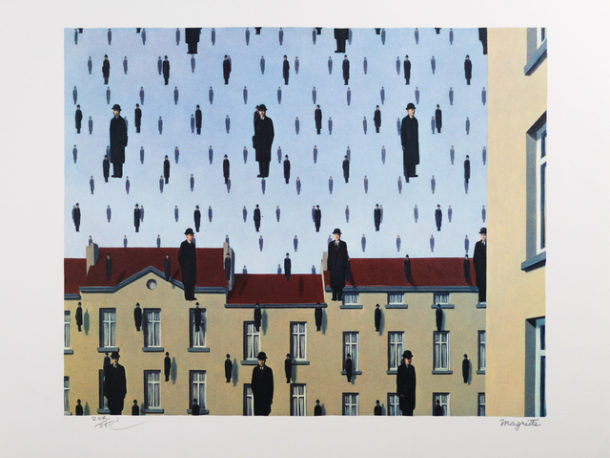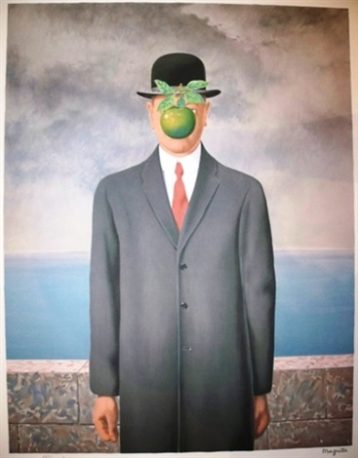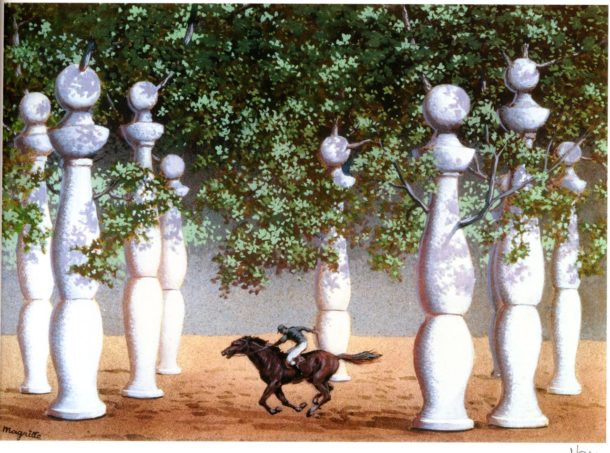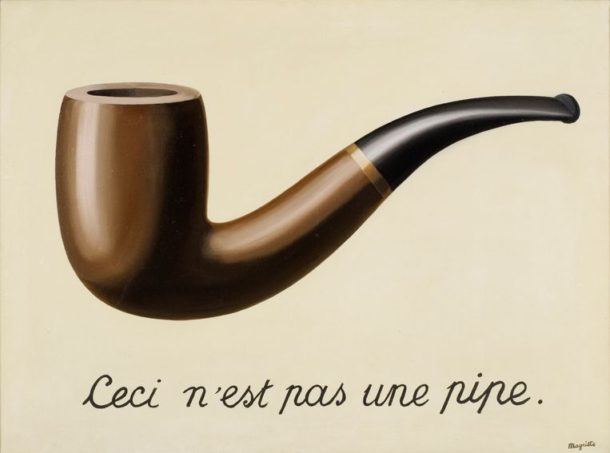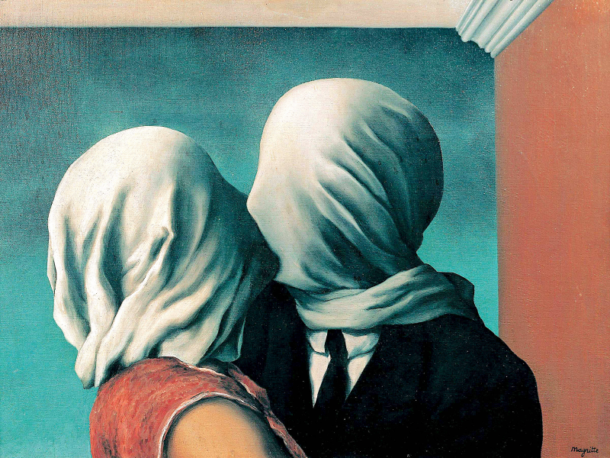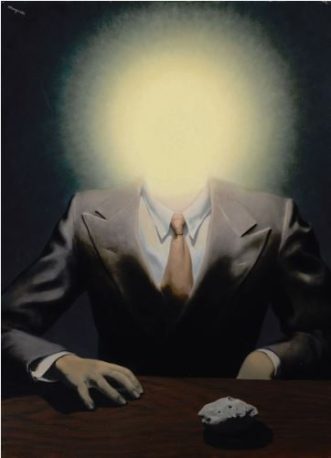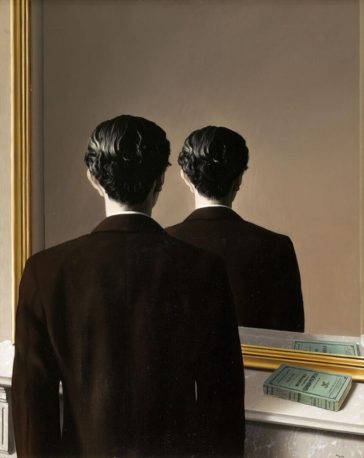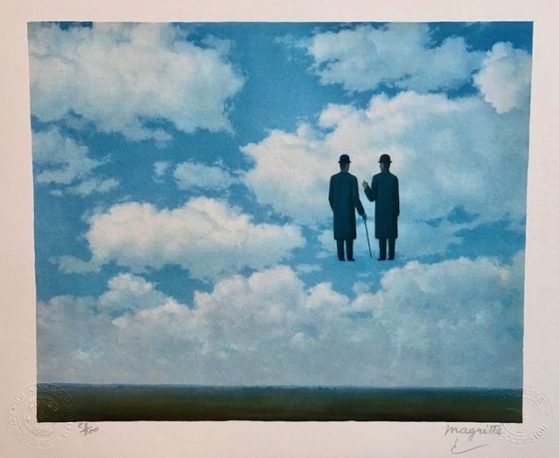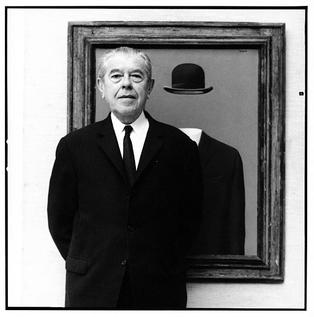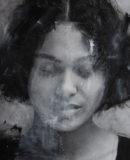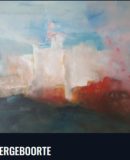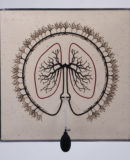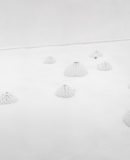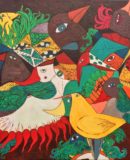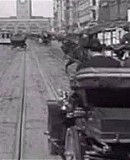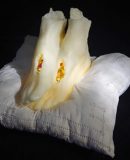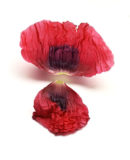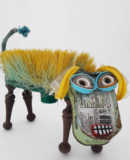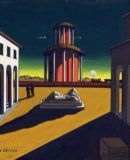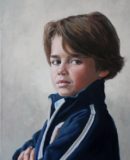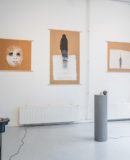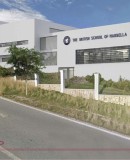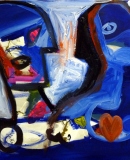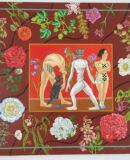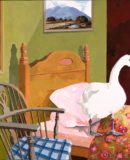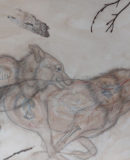World Fine Art Professionals and their Key-Pieces, 280 - René Magritte
World Fine Art Professionals and their Key-Pieces, 280 – René Magritte
René Margritte is a Belgian surrealist artist. In his work we see ordinary objects in an unusual context, which gives familiar things a new meaning. We all know several of his works, such as ‘Ceci n’est pas une pipe’, ‘Golconde’ and ‘Le Fils De L’Homme’.
In 1922-1923 Magritte worked as a draftsman in a wallpaper factory and he was also a poster and advertising designer until 1926. In that year, Galerie Le Centaure in Brussels enabled him, with a contract, to paint full-time. He made his first surrealist painting, ‘Le jockey perdu’, and the following year he had his first solo exhibition in Brussels.
To Paris
There was considerable criticism. Magritte became depressed and left for Paris. There he became friends with André Breton who involved him in his surrealist group. Magritte created his own version of surrealism, with an illusionistic, dreamlike atmosphere. He became an important member of the movement and stayed in Paris for three years. In 1929 he exhibited at Galerie Goemans in Paris with Salvador Dalí, Jean Arp, de Chirico, Max Ernst, Joan Miró, Picabia, Picasso and Yves Tanguy. On December 15, 1929, he participated in the last publication of La Revolution Surrealiste, No. 12, where he published his essay ‘Les mots et les images’, in which words play with images in sync with his work ‘La trahison des images’.
Back to Brussels
Gallery Le Centaure closed its doors at the end of 1929 and with that Magritte’s contract income ceased. Also because he sold little in Paris, he returned to Brussels in 1930 and resumed work in advertising. With his brother Paul he started an agency that provided regular income for both of them. In 1932 he joined the Communist Party, which he left several times to come back just as many times. In 1936 he had his first solo exhibition in the United States at the Julien Levy Gallery in New York, followed by an exhibition at the London Gallery in 1938.
Confused childhood years
That was his breakthrough. With that he finally stepped out of the confused and difficult childhood years. His father Léopold was a tailor and textile merchant and his mother was a hat maker. When he was thirteen, his mother, Régina Bertinchamps, committed suicide by drowning herself in the Sambre. This was not her first attempt to take her own life, over the years she had made more attempts, which led her husband Léopold to lock her in her bedroom. One day she escaped and was missing for days. Her body was later discovered a few miles away on a tributary.
It was said that 13-year-old Magritte was present when her body was removed from the water, but that is now doubted, the story came from the family nurse. What is true is that when his mother was found, her dress covered her face. This is said to be the source of several paintings in 1927-1928 of people whose faces are covered in clothing, including ‘Les Amants’.
Impressionist beginning
Magritte’s earliest paintings, dating from about 1915, were Impressionist in style. In the years 1916–1918 he studied at the Académie Royale des Beaux-Arts in Brussels, among others with Constant Montald as teacher, whom he found uninspiring. He also took classes at the Académie Royale from the painter and poster designer Gisbert Combaz. The paintings he made in the period 1918–1924 were influenced by Futurism and Metzinger’s figurative cubism.
In the 1920 / 21 Magritte served in the Belgian infantry in the Flemish town of Beverlo near Leopoldsburg. The following year he married Georgette Berger, whom he had met as a child in 1913. The poet Marcel Lecomte showed him a reproduction of Giorgio de Chirico’s ‘Canto d’Amore’ (painted in 1914). The work brought Magritte to tears. He described this as “one of the most moving moments of my life: my eyes saw thoughts for the first time.”
London
And then he went to Paris, where, we saw, he came into contact with surrealism. In the mid-1930s, he lived in London, where he also studied architecture. He was able to stay in the house of Edward James, who was a great lover of the Surrealists. James is featured in two of his paintings, ‘Le Principe du Plaisir’ (1937) and ‘La Reproduction Interdite’.
During the German occupation of Belgium he stayed in Brussels. In 1943–44, he briefly adopted a colorful, picturesque style, an interlude known as his ‘Renoir period’, in response to his feelings of alienation and desolation in occupied Belgium.
Back to surrealism
When the war ended, his work became more optimistic, the scenes of violence disappeared, he joined several other Belgian artists in signing the manifesto ‘Le Surréalisme en plein soleil’. In his ‘vache period’ he started to paint in a rough and provocative Fauve style. In order to generate sufficient income, he, in collaboration with his brother Paul, made fake Picassos, Braques and De Chiricos. He also printed counterfeit banknotes. At the end of 1948 he returned to his pre-war surrealist art.
Success is not long in coming. In France he will have a number of retrospective exhibitions and also in America, some time later, various exhibitions will be held, including in the Museum of Modern Art, the Metropolitan Museum of Art and the San Francisco Museum of Modern Art.
All the while, Magritte was on the left and maintained close ties with the Communist Party in the post-war years. However, he was critical of the cultural policy of the communist left. He argued for an autonomy of art, not service.
Pop art, minimalism and conceptual art
In the 1960s, interest in Magritte’s work increased sharply. His imagery has influenced pop art, minimalism and conceptual art. In 2005 he came in ninth place of ‘Greatest Belgian’, at least in the Walloon version, the Flemish put him in 18th place.
In 1963, the painter’s health deteriorated and this led him to go to Ischia, Italy. Nevertheless, in 1965 the Magritte’s made their first trip to the United States to visit the retrospective of the Museum of Modern Art in New York.
Belgian tribute
He died at home on August 15, 1967, eleven days after the opening of a retrospective exhibition of his oeuvre in the Boymans van Beuningen museum in Rotterdam. In 1998, the year in which the 100th anniversary of Magritte’s birth was commemorated, Belgium paid him a special tribute. The most important exhibition ever dedicated to Magritte took place at the Royal Museums of Fine Arts in Brussels.
Images
1)Golconde, 2) Le Fils De L’Homme, 3) Jockey Perdu, 4) La trahison des images, 5) Les Amants, 6) Le Principe du Plaisir, 7) La Reproduction Interdite, 8) La Reconnaissance, 9) La Reconnaissance Infinie, 10) René Magritte
https://bit.ly/323rdsL
https://ifthenisnow.eu/nl/personen/rene-margritte
Disclaimer: The views, opinions and positions expressed within this guest article are those of the author Walter van Teeffelen alone and do not represent those of the Marbella Marbella website. The accuracy, completeness and validity of any statements made within this article are not guaranteed. We accept no liability for any errors, omissions or representations. The copyright of this content belongs to Walter van Teeffelen and any liability with regards to infringement of intellectual property rights remains with the author.

